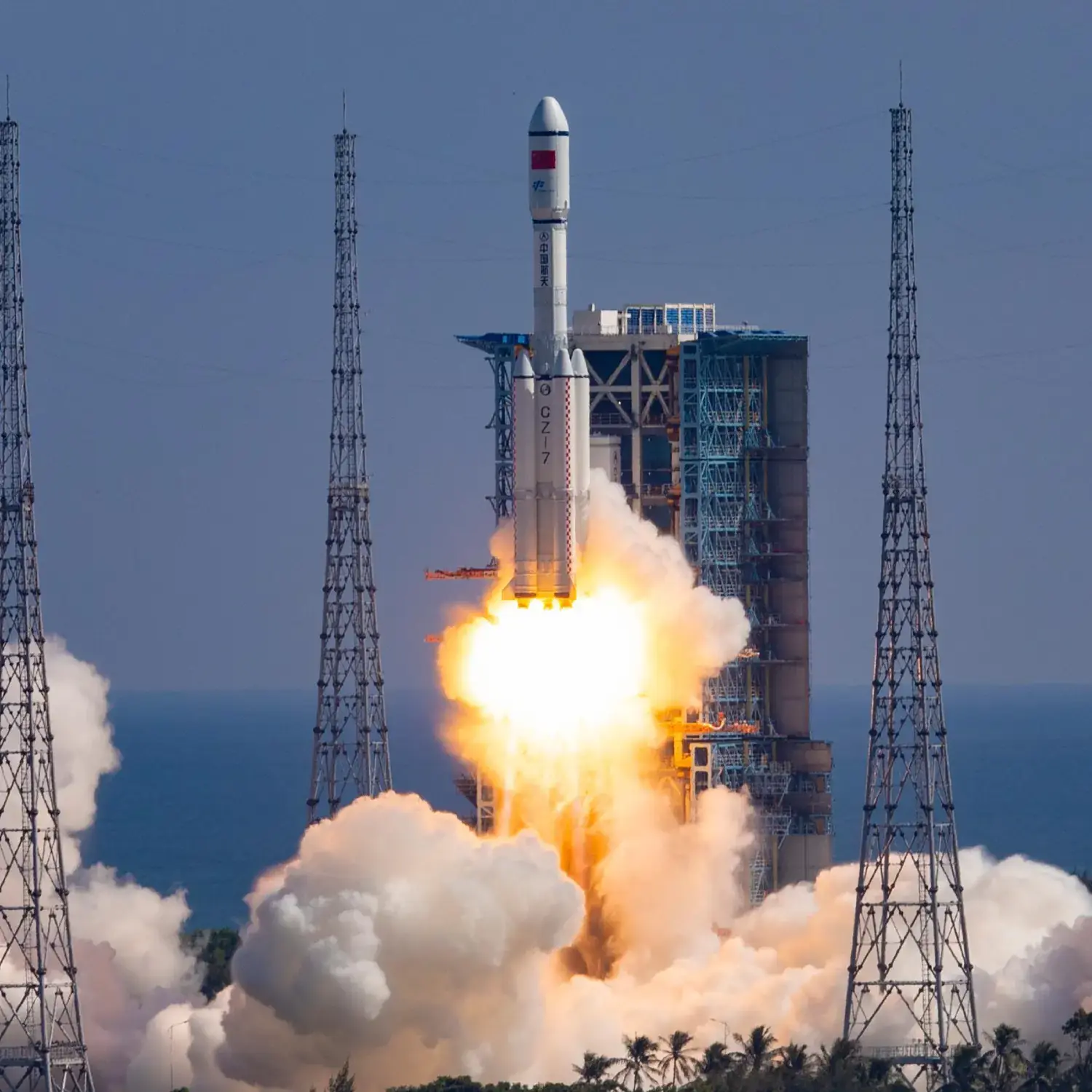/
Tianzhou 2
Launch Success
Liftoff Time (GMT)
12:55:29
Saturday May 29, 2021
Watch Replay
Official Livestream
Mission Details
Read Article
Launch Notes
First cargo flight to the new Chinese space station.
Tianzhou 2
The Tianzhou (Chinese: 天舟; lit. 'Heavenly Ship') is a Chinese automated cargo spacecraft developed from China's first prototype space station Tiangong-1 to resupply its future modular space station. It was first launched (Tianzhou 1) on the Long March 7 rocket on April 20, 2017, and demonstrated autonomous propellant transfer (space refueling). The Tianzhou cargo ship has several notable differences with the Tiangong stations from which it is derived. It has only three segments of solar panels (against 4 for Tiangong) but has 4 maneuvering engines (against 2). Classically, the Tianzhou space freighter consists of two subassemblies: the service module in which the propulsion, energy system, and various equipment necessary for the operation of the spacecraft is located, and the orbital module containing the cargo. The service module is similar to the service module of Tiangong 1 with some modifications: a larger number of propellant tanks, and a more powerful propulsion system. The module is 3.3 meters long and has a diameter of 2.8 meters. The main propulsion used for orbital maneuvers consists of 4 rocket engines with a unit thrust of 490 newtons. The cargo module is 5 meters long and has in its basic version a pressurized bunker to transport cargo with a volume of 15 m3. The front part is equipped with an APAS-type hatch that allows electrical connections to be made, as well as 4 pipelines used to transfer fluids to the space station's tanks.
Low Earth Orbit
1 Payload
13,000 kilograms
Rocket


Agency
CASCRocket
Height: 53.1m
Payload to Orbit
LEO: 13,500 kg
GTO: 5,500 kg
Liftoff Thrust
7,128 Kilonewtons
Fairing
Diameter: 4.2m
Height: 12.4m
Stages
2
Strap-ons
4
Launch Site
Stats
Long March 7
5th
Mission
2nd
Mission of 2021
2021
48th
Orbital launch attempt